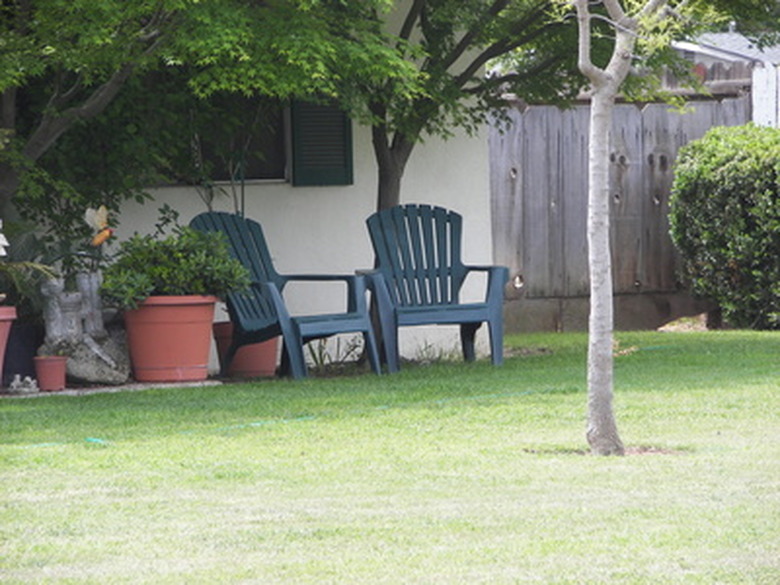Weed & Feed Vs. Fertilizer
The separate chores of fertilizing the lawn and controlling weeds was meant to be addressed by combining the chemicals for both in one product: weed and feed. But the time to apply fertilizer and herbicides rarely coincides. There are also drawbacks to broadcasting weed killers non-selectively over the entire lawn. When deciding whether to purchase or use a fertilizer or weed and feed, consider what will be most helpful to the lawn, any other plants on your property and nearby, and best for your pocketbook.
Weed and Feed
The formula for weed and feed products is generally granular, and is applied by using a fertilizer spreader over the entire lawn. It is meant to be used anytime you would normally fertilize the lawn, with the bonus of killing any broadleaf weeds that are actively growing in the lawn. Grassy weeds are not controlled, and any trees and shrubs with roots growing in the lawn get a substantial dose of poison every time weed and feed is used.
- The separate chores of fertilizing the lawn and controlling weeds was meant to be addressed by combining the chemicals for both in one product: weed and feed.
- The formula for weed and feed products is generally granular, and is applied by using a fertilizer spreader over the entire lawn.
Fertilizer
Fertilizers are not designed to kill weeds. They come in granular or liquid form, chemical or organic, and can nourish both lawn and weed. When using fertilizers alone, weeds are managed by mowing before seed heads develop, keeping the lawn healthy (which helps it choke out weeds), pulling, or spot-applications of selective herbicides. Herbicides are rarely (if ever) broadcast over the entire lawn, as this is neither ecologically responsible nor economically sound.
Timing
Lawn fertilizers are best applied in fall to help the roots establish and increase the winter hardiness. Sometimes fertilizers are applied in spring, though this practice is increasingly discouraged. The most persistent weeds, however, are at their height during summer. Since the herbicides in weed and feed are only effective against growing weeds and aren't effective as a pre-emergence herbicide, they would have to be used during the hotter parts of the summer. Fertilizer applied at this time either burns the lawn or causes it to put on tender, stressed growth that needs extra watering.
- Fertilizers are not designed to kill weeds.
- When using fertilizers alone, weeds are managed by mowing before seed heads develop, keeping the lawn healthy (which helps it choke out weeds), pulling, or spot-applications of selective herbicides.
Overuse and Pollution
By its very nature, weed and feed cannot be spot-applied, as post-emergence herbicides should be applied. The fertilizer must be evenly spread across the lawn. So all of the areas where the herbicide falls and is not needed, it is wasted. These unused herbicides are washed away by rain or watering the lawn, or leech into the soil. In some products, the herbicides take a long time to break down, and so they kill broadleaf plants wherever they're washed away to.
Banned Product
In 2010, Canada announced that products coupling fertilizer with any pesticide (including herbicide, as in the case of weed and feed), would no longer be allowed for purchase or use on fine turf (such as lawns, golf courses, commercial properties, and public areas). The ban is intended to address the lack of selective use of weed and feed products for weed control when the product is applied to the entire lawn with the fertilizer.
- By its very nature, weed and feed cannot be spot-applied, as post-emergence herbicides should be applied.
- These unused herbicides are washed away by rain or watering the lawn, or leech into the soil.
